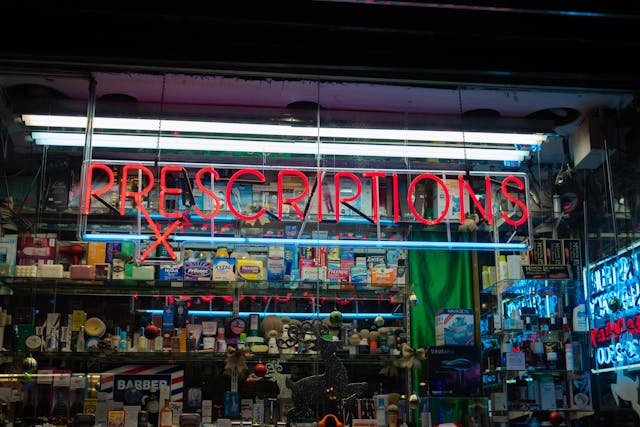Health and Wellness
How Prescription Discounts Are Changing Access to Medication
Key Takeaways
- Pharmaceutical companies are offering direct-to-consumer sales and significant price reductions.
- Partnerships between discount platforms and pharmacies are expanding access to affordable medications.
- Legislative measures are being implemented to cap out-of-pocket expenses for patients.
Table of Contents
- Introduction
- Direct-to-Consumer Sales
- Pharmacy and Discount Platform Partnerships
- Legislative Measures to Reduce Costs
- Impact on Patient Access
- Challenges and Considerations
- Future Outlook
Introduction
Prescription drug costs in the United States have placed a significant strain on families, individuals, and even healthcare providers for years. Fortunately, a new era—marked by direct-to-consumer sales, bold legislative reforms, and creative partnerships with discount platforms—is beginning to reshape how prescriptions are accessed and paid for. Solutions like Buzz Rx are at the forefront, helping patients discover new savings and improved access to vital treatments without sacrificing quality. These shifts empower more people to afford essential medications, reduce burdensome out-of-pocket expenses, and benefit from innovative programs focused on simplifying the medication process.
Pharmaceutical companies, pharmacies, and technology platforms are breaking from traditional models and finding ways to deliver medications at lower prices. Meanwhile, government intervention amplifies these efforts, instituting new price caps and protections for vulnerable populations. This multi-pronged approach aims to support the millions who struggle with drug affordability, whether they’re managing chronic conditions or one-time health setbacks.

These industry changes benefit both patients and providers by eliminating some of the markups and inefficiencies that existed for decades. Programs that unite pharmacies and discount services have expanded access to blockbuster medications and everyday drugs. As legislative policies and consumer-driven solutions move forward simultaneously, the healthcare landscape is taking concrete steps toward addressing health equity and affordability.
Patients are seeing real results: more reliable access to medication, lower costs, and greater transparency throughout the process. The promise of affordable medicines is becoming a reality, though significant challenges remain.
Direct-to-Consumer Sales
Several pharmaceutical manufacturers have started selling select therapies directly to patients at a steep discount to address the high cost of life-saving drugs. For example, Amgen recently announced that its cholesterol-lowering drug, Repatha, will be available to U.S. consumers at a 60% reduction, bringing its cost down to roughly $239 per month and bypassing some usual intermediaries like pharmacy benefit managers and wholesalers.
Direct sales models can cut out layers of markup, offering a more transparent pricing process while improving affordability. Pharmaceutical companies hope to foster greater trust by engaging patients directly and carving out a path for others to follow. This growing trend indicates that major pharmaceutical players recognize the urgency to reform pricing structures and create direct avenues for consumers to access vital therapies more affordably.
Pharmacy and Discount Platform Partnerships
Integrating discount platforms with established pharmacy networks is another major frontier in lowering prescription costs. Partnerships like the one between GoodRx and Kroger’s healthcare division, seen in the RxSmartSaver program, offer branded drugs—including high-demand treatments like Novo Nordisk’s weight-loss medication Wegovy and Sanofi’s insulin Lantus—at significantly reduced prices at nearly 2,200 Kroger pharmacies across the country.
These platforms leverage data analytics and broad purchasing agreements to negotiate savings, then pass those discounts to consumers at the retail level. For patients, this means less confusion at the register and fewer instances of people leaving prescriptions unfilled due to cost barriers. Such collaborations can especially benefit those with high-deductible insurance plans or the uninsured, offering a practical solution for everyday medication access.
Legislative Measures to Reduce Costs
Lawmakers are also stepping in with transformative new rules to ease patients’ financial load. The Inflation Reduction Act of 2022 introduced historic changes for Medicare beneficiaries, including a $2,000 annual cap on out-of-pocket costs for prescription drug coverage under Medicare Part D, set to take effect in 2025. This change provides peace of mind for millions of older Americans and those with disabilities, who often face the harshest consequences of unaffordable prescription pricing.
Legislative actions across states also push for more transparency in drug pricing and more aggressive negotiation of drug costs for public programs. These policy interventions work alongside market-based solutions, expanding the reach of cost-saving initiatives while creating enforceable protections for most at-risk consumers.
Impact on Patient Access
The tangible results of these efforts are already visible. According to a study in JAMA Network Open, Amazon Pharmacy’s prescription subscription model, RxPass, resulted in a 27% increase in medication days supplied, a 29% jump in refill rates, and a 30% decrease in out-of-pocket costs for users. This improvement highlights how broader subscription and discount models remove barriers to continuous medication use—a critical factor in managing chronic conditions and improving quality of life. Improved access isn’t limited to isolated examples. Across the board, patients who can more reliably afford their medications are less likely to experience medication gaps or avoid treatment due to cost. This leads to better health outcomes, fewer hospital admissions, and reduced overall healthcare expenditures—a benefit to individuals and society.
Challenges and Considerations
While largely positive, the shift toward lower drug prices is not without complications. Direct-to-consumer sales can upend the established roles of pharmacies and pharmacy benefit managers, potentially creating uncertainties in pharmacy revenue and patient care coordination. Clinics serving vulnerable populations have, in some cases, experienced financial strain due to altered reimbursement structures, threatening their ability to offer essential community programs.
There is also a risk that deeply discounted direct-market sales could sidestep established insurance and copay assistance mechanisms, sometimes fragmenting care. As the market adjusts, evaluating the ripple effects of pricing reforms remains critical, ensuring that measures to lower costs don’t unintentionally restrict services for the most at-risk groups.
Future Outlook
The pathway toward equitable, affordable prescription access continues to evolve. Success will depend on careful collaboration among stakeholders: pharmaceutical manufacturers, pharmacies, discount platforms, insurers, and policymakers. Monitoring and adapting programs to maximize savings and patient outcomes, without undermining the broader healthcare ecosystem, remains central to long-term improvement.
As more Americans feel the impact of these reforms in their day-to-day lives, ongoing transparency, smart regulation, and consumer empowerment promise to further narrow gaps in medication access. The coming years will likely bring new opportunities and continued debate, but the momentum toward positive change is undeniable.

